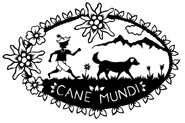
Cane Mundi Library
Merle's Door: Lessons from a Freethinking Dog (Ted Kerasote)
While on a camping trip, Ted Kerasote met a dog—a Labrador mix—who was living on his own in the wild. They became attached to each other, and Kerasote decided to name the dog Merle and bring him home. There, he realized that Merle’s native intelligence would be diminished by living exclusively in the human world. He put a dog door in his house so Merle could live both outside and in.
A deeply touching portrait of a remarkable dog and his relationship with the author, Merle’s Door explores the issues that all animals and their human companions face as their lives intertwine, bringing to bear the latest research into animal consciousness and behavior as well as insights into the origins and evolution of the human-dog partnership. Merle showed Kerasote how dogs might live if they were allowed to make more of their own decisions, and Kerasote suggests how these lessons can be applied universally.
Product Details:
- Publisher : Harcourt, Inc.; 1st edition (July 2, 2007)
- Language : English
- Hardcover : 398 pages
- ISBN-13 : 978-015-603450-0
- Dimensions : 6 x 1.36 x 9 inches
Reviews:
From Publishers Weekly
Humorous, jubilant and touching by turns, this story of the relationship between man and dog is informed by the author's grasp of animal research and his attachment to Merle, a stray dog he adopted. A Labrador mix, Merle first appeared while the author was on a camping trip. Kerasote (Out There: In the Wild in a Wired Age), an award-winning nature writer, decided to take his canine friend home to rural Wyoming. This chronicle of their 13 years together is interspersed with studies by animal behaviorists that strengthened Kerasote's desire to see Merle as a responsible individual rather than a submissive pet. Merle set his own eating schedule (though not without early mishap), refused to hunt birds (although not elks) and, according to the author, possessed a range of emotions and sentiments similar to those of humans. Kerasote tends to anthropomorphize Merle's every look and movement, but this narrative is entertaining and Kerasote's strong love for Merle and enthusiasm for life in the wild will win over many readers. Kerasote's joyous relationship with Merle is balanced by a bittersweet account of a close relationship the author had with Alison, a neighbor and fellow dog owner. Kerasote's last weeks with the dying Merle are beautifully rendered. (July)
Copyright © Reed Business Information, a division of Reed Elsevier Inc. All rights reserved.
From Booklist
Merle showed up at the San Juan River at the same time Kerasote and his river-rafting friends arrived. Merle looked at Kerasote as if to say, "You need a dog, and I'm it." He accompanied the group down the river and then went home to Wyoming with Kerasote. A dog who was eager to please and almost trained himself, Merle learned the ways of bison, ground squirrels, and coyotes. Merle then taught Kerasote the fullness of the hunt, leading Kerasote to his favorite prey. But, after Kerasote installed a dog door, the main thing Merle taught him is that a dog develops to his full potential, becoming the dog he was meant to be, when allowed to make his own decisions. Merle developed a life of his own, patrolling the small settlement where they lived with his dog companions, and yet was always very aware of Kerasote and his schedule. In telling Merle's story, Kerasote also explores the science behind canine behavior and evolution, weaving in research on the human-canine bond and musing on the way dogs see the world. Merle is a true character, yet Merle is also Every dog. An absolute treasure of a book. (Nancy Bent)
Copyright © American Library Association. All rights reserved
